Are you looking for a serious physical conquest? If so, climbing Puncak Jaya or Carstensz Pyramid, one of the World's 7 Summits, may be perfect for you.
Read on for my guide on the Puncak Jaya climb, including route options and a typical itinerary, the best time to visit, how to get there and how to prepare for your climb.
Climbing Puncak Jaya
Puncak Jaya Overview
The Carstensz Pyramid, also known as the Puncak Jaya, is the highest peak in the Australasian continent. The Carstensz name was given after Dutch explorer Jan Carstensz after he recorded his sighting of the glorious white peaks in the distance in 1623.
It is specifically located in the western central highlands of the Papua Province, Indonesia, amidst lush tropical jungle.
Altitude And Technicality
At 4,884m (16,024ft), it is considered one of the notorious Seven Summits, and as such is a rite of passage for serious mountaineers. Although it has the lowest elevation of the Seven, Carstensz is the only peak which is specifically a rock climbing peak and it has the highest technical rating.
Puncak Jaya History And Local Culture
The mountain was first successfully climbed in 1962 in an expedition led by Heinrich Harrer as well as three others. Its relative inaccessibility, government restrictions and political instability, as well as local tribal wars have meant that not many people have climbed it since this initial ascent.
Culturally, the region is almost unique. The Dani tribesman of the Beliem Valley first made contact with Westerners only in the 1960s, and many of the Stone Age Dani customs have been preserved.
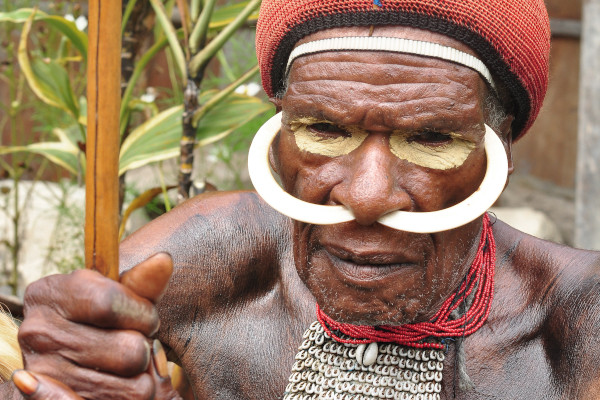
For example, traditional garb is still worn by men and women. Tourism has not significantly influenced the lifestyles of these people, so it is imperative that visitors are extremely sensitive to the importance of minimising their impact. For many mountaineers, it is the most exciting and interesting adventure of their lives.
Know Before You Go: Puncak Jaya
The “normal” route you will follow up Carstensz presents a series of gullies on 500m of solid rock on the north face of the mountain, after which you will break through onto the summit ridge.
Atop this ridge, you will scramble over uneven terrain for another 500m until you reach the summit.
It is important to remember, in planning this trip, that a high degree of flexibility is necessary. Political instability in the region and unpredictable weather mean that it is likely that you will have to accept a last-minute itinerary-change.
However, if you have the luxury of time, and are fascinated by new cultures and scenery, this magnificent climb is definitely worth it..
Puncak Jaya Climbing Routes
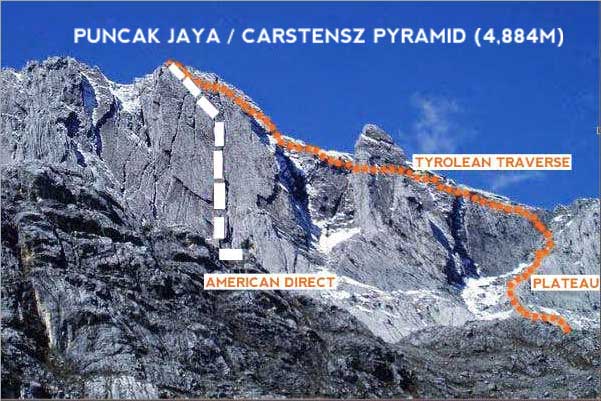
The first decision you must make before your climb is how to get to the mountain. Many tour companies offer a chartered flight to Timika, Papua followed by a helicopter to reach the Zebra Wall Base Camp.
From here, you’ll do a quick trek to the Lake Valley Base Camp where you’ll spend a day acclimatizing before you attempt your climb.
However, there is also the option of a 6-day, 67km trek from Ilaga or Sugapa (which you’ll arrive at by plane) through the heavy jungle. This trek is relatively strenuous and accommodation is in caves or tents along the way.
Check out the Itinerary below for more specific route information on the trek through the jungle.
Once your reach Base Camp, there are three different climbing options which lead to the summit of the pyramid. Using technical equipment, one of the routes is of “normal” or moderate difficulty, while the other two are significantly more challenging.
Normal Route (also known as Harrer’s Route)
In total, the ascent and descent on the Normal route takes 12 to 15 hours.
The route entails a 600m rock face to the top of a ridge. Just below the ridge and along the jagged cliff, there are fixed ropes to aid the climb. This section, just below the summit, is by far the most difficult.
One of the notches on the summit ridge is 20m deep and requires that one rappel the overhanging wall (VS, UIAA VI) pitch and leave the rope fixed to jumar on return. For the way down, you will need to manoeuvre on long ropes.
American Direct
This route, instead of including the traverse along the ridge, leads straight up the summit (see picture above).
This is the most exposed and difficult route – the most challenging section being the Carstensz headwall, again just below the summit.
East Ridge
The route lies between the normal and direct routes, with a long ascent and a lot of scrambling. Beware of loose rocks and tricky narrow sections on the East Ridge.
Typical Itinerary For Climbing Puncak Jaya
As mentioned above, there is the option of simply flying into Base Camp from Timika, instead of completing this strenuous hike through the jungle.
Below is a typical Itinerary for the Carstensz climb, including the trek to and from Timika, Papua.
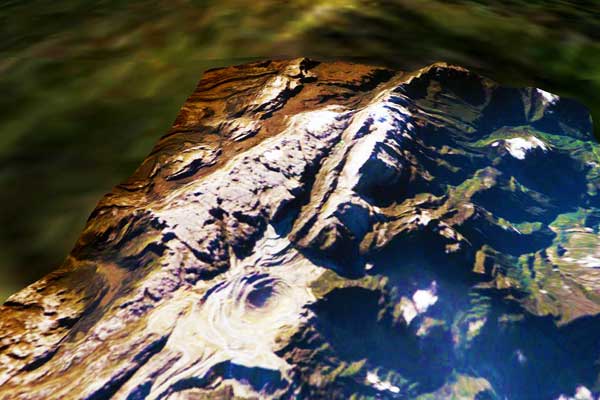
NASA Photo
Day 1: Flight to Timika, Papua
Day 2: Flight from Timika to Sugapa (2244m), and drive to Suanggama (2018m)
Day 3: Suanggama (2018m) to Salt Factory Camp (2380m)
Day 4: Salt Factory Camp (2380m) to Indisaga Camp (3230m)
Day 5: Indisaga Camp (3230m) to Ebay Camp (3584 m)
Day 6: Ebay Camp (3584m) to Nasidome (3734m)
Day 7: Nasidome (3734m) to Base Camp (4273m)
Day 8: Ascent of the Carstensz Pyramid
Day 9-10: Hike back from Base Camp to Sugapa
Day 11: Fly via Timika to Bali
Best time to climb Carstensz Pyramid
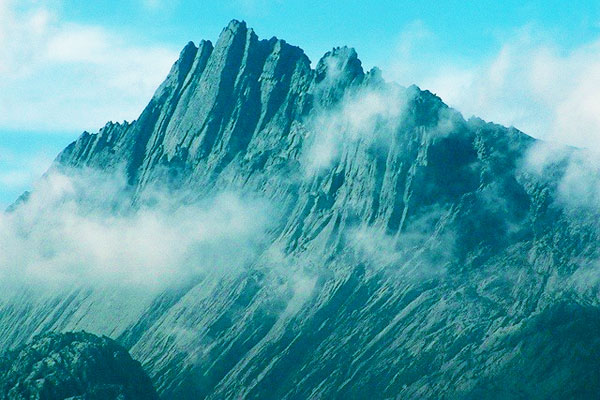
Unfortunately, the weather on Carstensz Pyramid is unpredictable and often bad. The good news is that there is no “best” time in the year for the climb, although most chose the dry season from April to November.
The weather is constantly changing at any time of the year and you should expect the worst (by that I mean, inundated with rainstorms, scorched by the sun, an even welcomed to the summit by an enthusiastic snowstorm 😵💫).
To avoid the majority of precipitation, most tour companies plan their ascent days in the early morning, when the chance of rain and snow is much lower.
It should be noted that these chaotic conditions are only really seen in the highlands, where the mountain is located. If you plan to trek to Carstensz through the rainforest, however, it would be prudent to choose the dry season – from April to November.
At all times of the year, in the rainforests, you can expect temperatures of around 77F (25°C) in the day time, which drop to about 41F (5°C) at night.
Even in the relatively dry season, you should be prepared for warm afternoon downpours. As you approach the base of the mountain, the likelihood of afternoon snow increases, temperatures drop below freezing, and strong winds are a possibility.
How Difficult is the Puncak Jaya Climb?
The trek to base camp is relatively strenuous, and requires that you are able to walk continuously with a 40-lb backpack for 6-7 hours per day, for days in a row.
This requires both physical and mental stamina. One of the most challenging features of the climb, however, is the exposure to chaotic weather which can often be overcome with careful and flexible planning, and with the right gear.
In addition to physical and mental resilience, the climb also imposes technical challenges, even on the Normal Route. Most experts consider the difficulty moderate, and many of the tour companies boast a nearly 100% success rate.
For the Normal Route, the climb is rated with an average difficulty of 3-4 UIIA, with most of the difficulty incurred just below the summit. The climb ascends a 600m wall, with a very steep final section.
At the bottom, the difficulty is graded VDiff (UIAA III) and at the top it increases to VS (UIAA V).
Fortunately, the rock is good and rarely loose. The difficulty varies with the East Ridge and the American Direct Route is by far the most challenging.
Is the Climb Dangerous?
Of course. Undertaking such a physical challenge always poses risks.
Although the number of fatalities are not strictly recorded, most are not the result of the climb itself, but instead are caused by heart conditions or other issues. Previous climbers have also expressed anxiety about the state of the fixed ropes on the mountain, which are notoriously shabby.
One of the most significant dangers of the expedition is not, in fact, the climb itself but that of navigating the surrounding region.
Although the area experiences periods of political calm, there have been incidents when visiting mountaineers have been at the brunt of regional tensions, been in threatening situations at the hands of local militants, and even had unpleasant encounters with an Indonesian SWAT team.
While the region’s remoteness adds to its allure, it also means that it can be very difficult to get out of an emergency situation, should things go awry. Chartered helicopters might be hired out elsewhere in the world, so it may be days before you can get out of the region.
We recommend that you monitor the political situation very closely, and speak to people who have been in the region recently to gauge how best to handle the situation, and whether the risk is foolhardy or reasonable.
For details on the conflict in the region see here.
Altitude Sickness
The effects of altitude sickness are commonly felt at anywhere over 3000m elevation above sea level. Because the Base Camp, and much of the trek, is significantly higher than this point, it is important that all potential trekkers are aware of the symptoms, potential effects and the ways of minimising the risk of experiencing these.
Firstly, it is important to note that it is impossible to predict the extent to which you will respond to high altitude as your response is not correlated to your fitness level, your age, or any other factor. Luckily, most mountaineers attempting Carstensz Pyramid will already have an idea of how well they fair at high altitudes.
Typical symptoms of acute mountain sickness (AMS) include fatigue, nausea and headaches. However, high altitude pulmonary edema (HAPE) and high altitude cerebral edema (HACE) can be fatal if left untreated.
To avoid altitude sickness, there are a number of tips that you should keep in mind:
- Acclimatise properly: tour companies incorporate enough time for acclimatization at Base Camp. This is especially important if you have opted to fly via helicopter into Base Camp instead of doing the 6-day trek
- Stay hydrated: drink about 3-4 litres of water each day of your expedition
- Avoid drugs or alcohol: even a sleeping tablet can cause you to have a raging headache
- Descend if you’re not feeling well: consult your tour guide to decide what the best way to deal with your symptoms are
Importantly, if you are concerned about the symptoms and have previously had difficulty at high altitudes, we recommend that you descend and consult a doctor.
Read our guide on altitude sickness here.
Gear Check List
The gear list is standard for a moderate-to-cold weather, multi-day hike and climb, with emphasis on waterproof and technical climbing gear. Because of the extreme weather changes, layering your clothes is important to be prepared for all potential conditions. And as always, avoid clothes made of cotton or denim.
Consult your tour company to decide what you need to bring from home and what you can rent from them. Click here for information on what the best brand options for various equipment are.
Permits & Costs
Many permits are necessary to climb and trek the mountain, which must be organised through the Indonesian government. It is recommended that you use a tour company, which will organise these logistics for you.
Most tour companies charge the same amount, regardless of whether you take a helicopter or trek to Base Camp.
The cost to climb Carstensz Pyramid is about $12,500-$25,000 per person. The range depends on the size of the group. Because of the risky logistics, we highly recommend that you do not skimp out and hire a cheaper company.
The inclusions and exclusions of the touring companies are also very important, given the political unrest in the region.
The cost of the typical expedition companies include: standard flights from Bali to Western Papua and back, accommodation during the trip, all meals, group camping equipment, climbing permits, porters and professional guiding support pertaining to the climb itself.
However, most expedition cost notably do not cover the costs of the (relatively likely) delays which are beyond the groups control. It also excludes the cost of a rescue mission from the region, should this become necessary.
Other costs which are not included in the flat rate are the significant cost of international travel, personal equipment, accommodation and meals in Bali and travel insurance.
To give an idea, a flight from New York to Bali is typically in the region of a further $1800.
Getting There
Most of the tour companies plan their itineraries to start in Bali. This way, whether you are planning to charter a flight and helicopter ride to Base Camp, via Timika, or are trekking there from Suanggama, you will not have to organise the intricate transport plans.
Training for Carstensz Pyramid
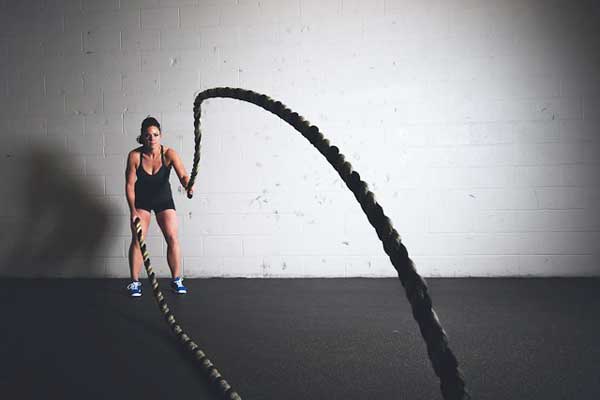
Although Carstensz Pyramid via the Normal Route is not a particularly difficult climb, you must be familiar with scrambling, working with fixed lines, rappelling and jumaring.
You should be comfortable with routes of a difficulty up to 5.8 (5.0 to 5.7 is considered easy, 5.8 to 5.10 is considered intermediate, 5.11 to 5.12 is hard, and 5.13 to 5.15 is reserved for elite climbers). Many tour companies offer short, alpine courses which can help you to gain skills and confidence in technical mountaineering.
In addition to technical proficiency, you will need to build your strength endurance as well as your cardiovascular capacity. Remember that being fit enough to run a marathon does not mean that you will be able to handle the challenges of a high-altitude peak. This is because pure aerobic fitness is not enough. Your training regime should focus on all of the following:
- Climbing conditioning: walking or hiking up hills or stairs carrying packs up to about 40 lbs
- Strength exercises: for lower body and core. This includes sit-ups, squats and lunges.
- Cardiovascular workouts: Aerobic and anaerobic, including cycling, running or swimming.
- Flexibility training: this decreases your chance of injury
Off a relatively solid baseline fitness, you should start training properly for Carstensz Pyramid at least 3 months before your trip.
Typically, your training strategy should involve increasingly difficult work-outs by ramping up your workout time, distance and elevation gain by about 10% each week. Be careful not to rush this process, as this may lead to injury or insufficient preparation.
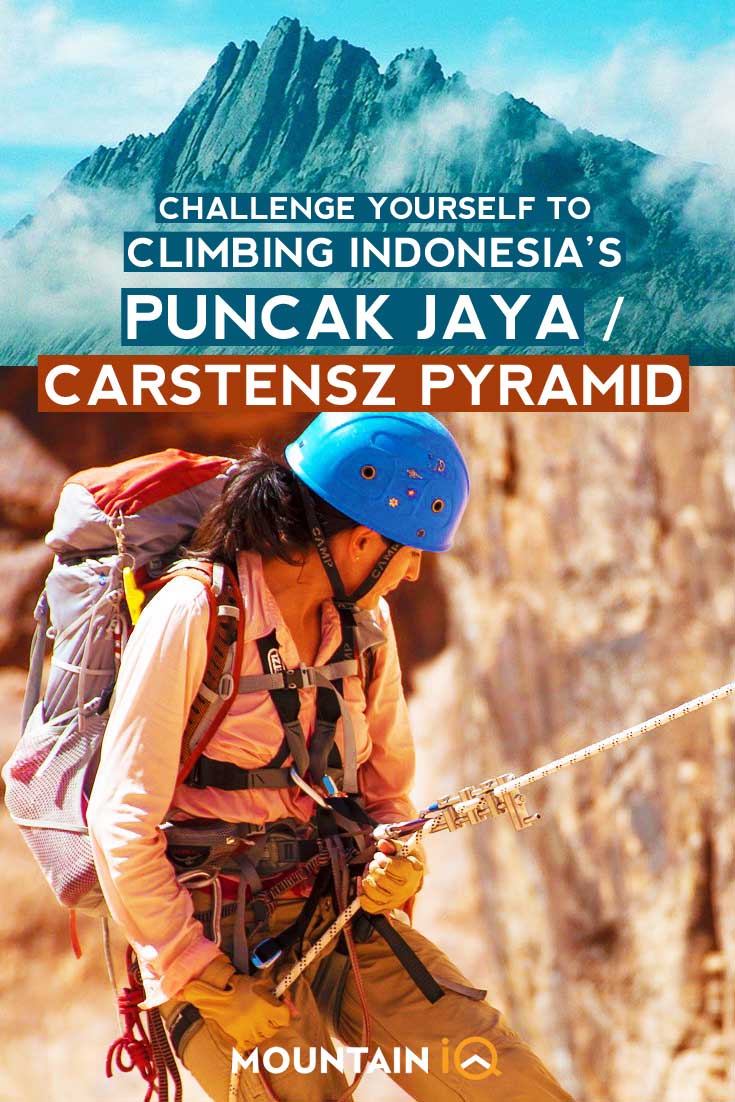

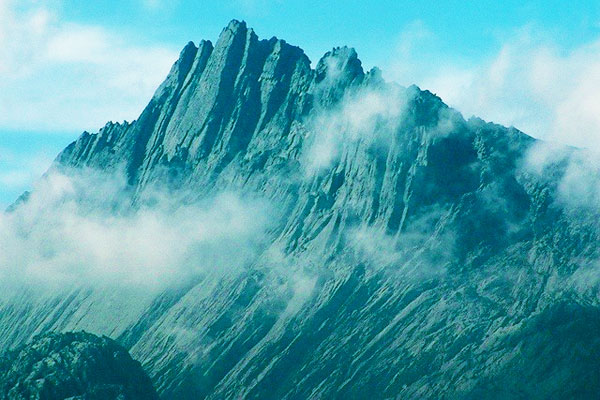
I’d like to climb Carstensz and trek in from Suanggama but I can’t find a guide service that offers that. Could you recommend someone?
Hi Christian, I unfortunately don’t know any who offer that route. Have you tried Jagged Globe or Mountain Madness?
love to do it again